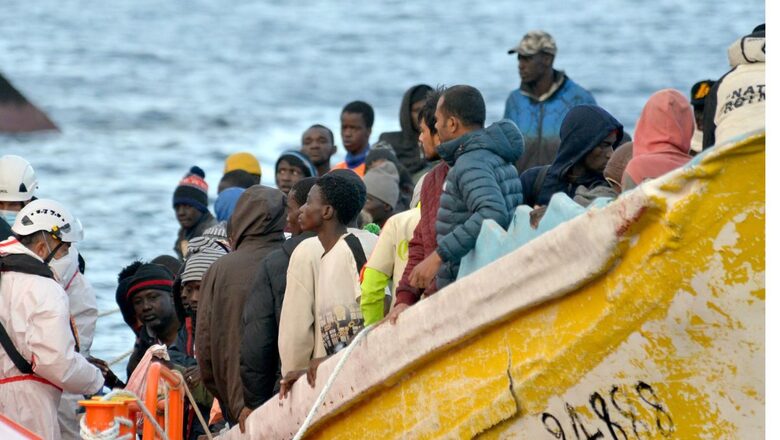
views
The number of migrants arriving illegally in Spain soared by over 80 percent in 2023, with a record number landing in the Canary Islands. The influx has strained resources in the seven-island Atlantic archipelago and pushed migration to the top of the political agenda in Spain, which along with Italy and Greece is a key entry point for migrants seeking a better life in Europe.
According to official figures, a total of 56,852 migrants entered Spain illegally last year, an 82.1 percent jump from 2022 and the most since 2018 when 64,298 migrants entered the country. The bulk of them, 39,910, arrived by boat in the Canaries after making the perilous crossing from Africa, an increase of 154.5 percent over last year and surpassing the record number set in 2006.
More than 7,800 people died or went missing at sea en route to the seven-island archipelago between 2018 and 2022, according to Spanish NGO Caminando Fronteras, which helps migrant boats in distress and the families of those who have gone missing.
With controls tightening in the Mediterranean, the Canaries route has become a favourite for people fleeing poverty and conflict in Africa, mostly on overcrowded, barely seaworthy vessels. Boats depart from Morocco, as well as Mauritania, Gambia and Senegal further south.
The journey from Senegal to the Canaries usually takes a week of difficult upwind sailing of around 1,600 km. To avoid controls, smugglers take longer more dangerous journeys, navigating west into the open Atlantic before turning north to the Canaries — a detour that brings many to the tiny westernmost El Hierro island.
Spanish Prime Minister Pedro Sanchez last month hailed an agreement to reform the European Union’s migration laws, saying it was key to his nation’s ability to better manage arrivals and its border. The package includes speedier vetting of irregular arrivals, creating border detention centres and accelerating deportation for rejected asylum applicants.



















Comments
0 comment